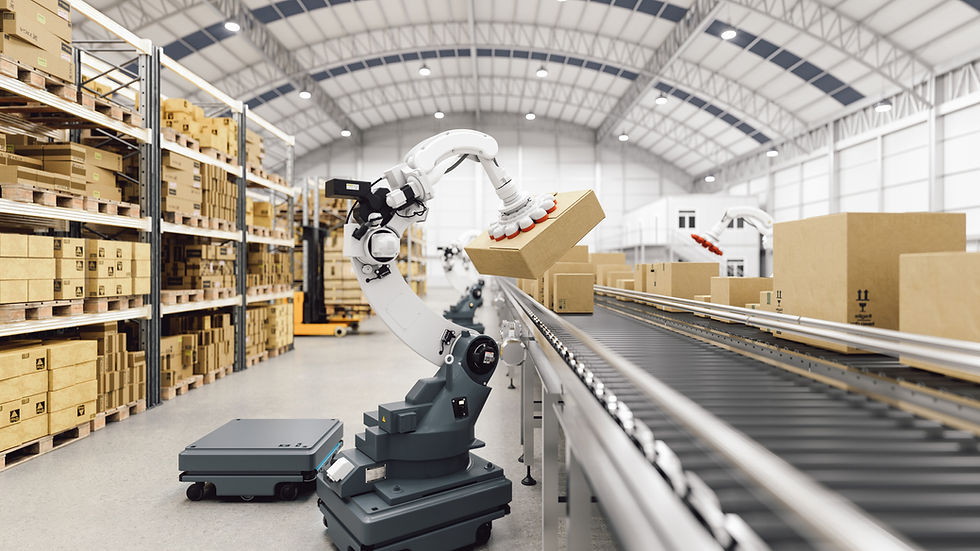The Trucking Industry: The Ever Shrinking Margin
- Sofija E. Jiotis
- Sep 18
- 4 min read
2 minute read
Author: Sophie Jiotis
In the U.S. alone, the logistics industry spans hundreds of thousands of companies, employing tens of millions of people, and raking in hundreds of billions annually. Its effect is all-encompassing, and its challenges are deeply felt.
The most preeminent of these challenges is that of vulnerable profit margins. The space is rife with invariably shifting factors—mileage, driver efficiency, market conditions, seasonal conditions, maintenance, and repairs—that determine revenue.
The current average profit margin is 2% to 8%, forging an immense pressure to reduce costs and inefficiencies.
Timeline-
Following deregulation in the 1980s and prior to the pandemic, trucking margins peaked at 18% before stabilizing at 8-12% in subsequent years. Starting in mid-2020, consumer demand reached an all-time high in response to restocks. This trend spiked freight demand, empowering elevated profit margins. These margins often reached double digits, prompting the creation of new companies and the purchase of new trucks. This trend exploded capacity, which eventually overshot consumption.

As demand cooled by late 2022, the industry saw plummeting spot rates, plateauing freight volumes, and widespread overcapacity. Excess capacity produced weaker pricing power: margins eroded quickly despite rising costs. This effect ushered in a freight recession that lasted into 2024, leaving rates below many carriers’ break-even mark.
A report by the American Transportation Research Institute (ATRI) determined that by mid-2025, non-fuel marginal operating costs rose 3.6% hitting $1.779 per mile, while total average cost stayed around $2.26 per mile. Since 2019, truck/trailer payments have increased by over 52%, with a notable 8.3% year-over-year jump in 2024. Driver benefits, insurance, tires, and tolls hit similar record highs.
For many carriers, profitability turned bleak. ATRI notes that all truckload segments finished 2024 with average operating margins below 2%. Many businesses in the trucking sector ended negatively, with only LTL keeping a slim positive margin.
Rising Operational Costs-
By mid-2025, the trucking industry showed tentative signs of rebalancing, but a weak demand-to-capacity ratio still threatens this recovery. Macro drivers such as elevated interest rates, shifting trade policies, and retail destocking have forged an uncertain backdrop for the industry. J.B. Hunt, a publicly traded company, reported an 8% decrease in net earnings for Q1 2025, citing weak demand and overcapacity as its causes. This decrease coincided with already mounting payroll and fleet size cuts.
Operational costs in the industry are similarly rising, to the detriment of recovery efforts. Diesel price volatility is a significant factor. Geopolitical instability, supply chain disruption, and refining constraints have elevated prices to all-time highs. Fuel remains one of the greatest single expenses for fleets, accounting for up to 25% of total operating costs.
Costs have similarly spiked for labor costs. The current driver shortage has pushed wages as carriers compete for talent. Other labor costs, including benefits, insurance, and training, have also mounted as stricter safety and certification requirements are
declared. Fleets must now comply with more stringent regulations (e.g., ELDs, drug testing, emissions standards), which require ongoing investment in technology and legal support. Insurance premiums are directly driven by Compliance, Safety, and Accountability (CSA) scores, which have escalated due to liability claims and nuclear verdicts.
The charges behind equipment and maintenance have risen sharply in recent years. Prices for both new and used trucks have surged due to ongoing supply chain disruptions and new emissions compliance technologies. These expenses are mirrored in heightened maintenance costs. The price of replacement parts and skilled labor has increased significantly. Modern trucks also now feature more complex technology (e.g., advanced sensors and telematics systems), which require costly and specialized upkeep.

Drivers Behind Market Erosion-
Market erosion is the reduction of market share, profitability, and functional efficiency for trucking companies. This occurrence can be attributed to various pressures and market conditions. Margin compression is the core driver of this trend. As costs rise per mile, profitability becomes a growing predicament.
The reasons, however, don’t end there. A plethora of causes can be attributed to this destruction, including:
Mounting Taxes
Insurance
License Fees
Permits
Deadhead Mile Cost
Driver Medical Exams
Monthly Truck and Trailer Payments
The Future of Margins-
The outlook for 2025 and onward remains uncertain. Capacity rebalancing and economic stabilization may offer a brief respite, but true margin recovery requires demand rebound and sustained rate discipline. Technology adoption may provide succor through TMS-driven data analytics, allowing for optimized and agile operations.
Amous TMS forges connections between data points by infusing technology across every function of fleet operation: keeping costs down and efficiency up. By integrating dispatch, accounting, data, and profit analysis into a unified platform, Amous eliminates the need for multiple systems, reducing labor and error. Key processes—load creation, optimization, payroll, and fleet tracking—are fully automated, minimizing manual input and accelerating operations. This automation boosts profit margins, allowing users to predict costs, analyze margins, and track revenue in real-time. Amous TMS logs detailed histories, tracks repair costs, and enables preventative maintenance through automated alerts, projecting future expenses, and extending the life of assets. In unison, these features improve cash flow, cut unnecessary spending, and ensure smarter, data-driven decisions across the board.




Comments